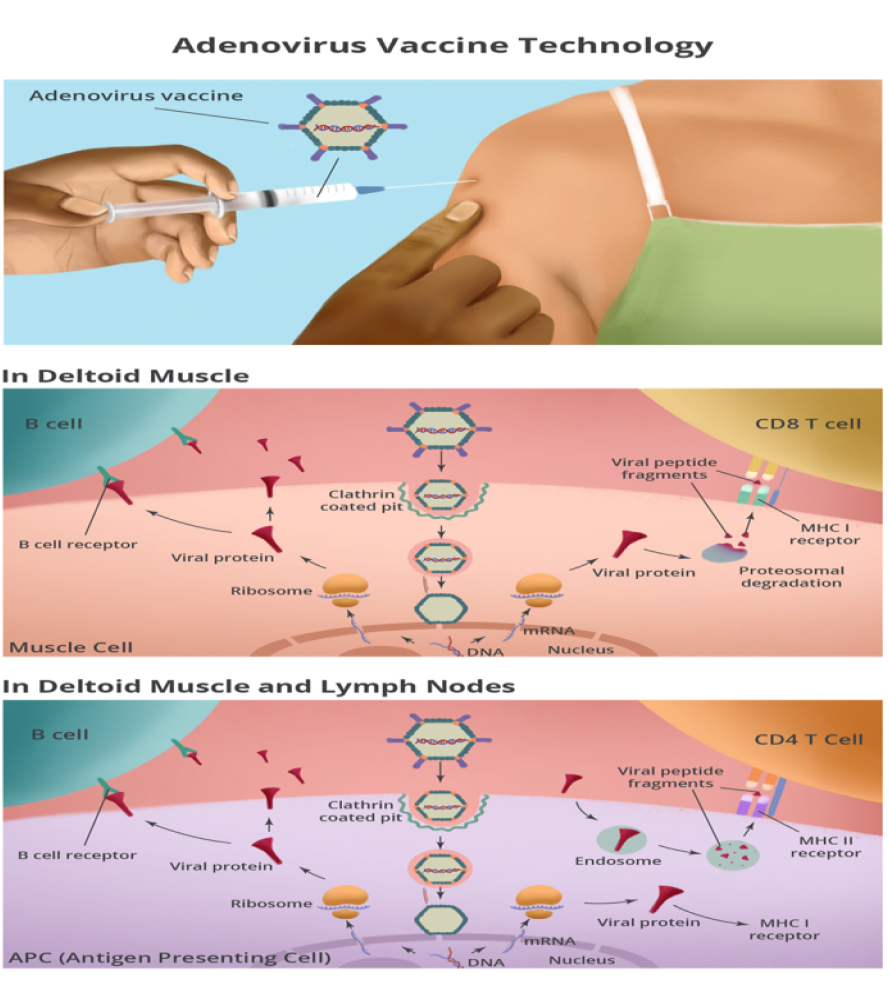Authors: Heather D. Marshall, PhD | Vito Iacoviello, MD
Viruses are genetic material surrounded by a protein shell with the ability to infect cells, highjack cellular machinery, and make copies of themselves. Viruses are also detected by the immune system and stimulate innate and adaptive immune responses and quite often, potent immunological memory that protects the host from reinfection. Therefore, researchers have been using viruses as vectors or carriers of vaccine antigens in order to protect against infectious diseases.
Adenoviruses are nonenveloped DNA viruses with a range of properties making them suitable vaccine vectors. Adenoviruses infect a wide range of cell types, they are easy to genetically modify, and in nature are known to cause mild or asymptomatic respiratory infection (thus, they are relatively safe). Further, gene swapping (replacing an essential adenovirus gene required for replication with the vaccine gene) renders the vectors replication incompetent, further contributing to safety. Many adenovirus-vectored vaccines target viral diseases because the adenovirus mimics a potent antiviral immune response, and its use as a SARS-CoV-2 vaccine is no exception.
One consideration with the use of adenovirus-vectored vaccines is the level of pre-existing immunity to the vector. Because adenoviruses are naturally occurring respiratory pathogens, most people are exposed to a variety of adenoviruses during childhood and have some immunity to the vector, which can blunt the response to the vaccine. To circumvent this issue, rare adenovirus serotypes such as Ad26 and Ad35 and non-human adenoviruses including chimpanzee, gorilla, and rhesus macaque viruses may be used as vaccine vectors.
For More Information: https://www.ebsco.com/blogs/health-notes/adenovirus-vectored-vaccines-covid-19-how-do-they-work
